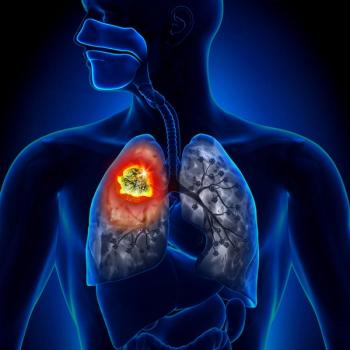
- ONCOLOGY Vol 12 No 10
- Volume 12
- Issue 10
Selected Cigarette Smoking Initiation and Quitting Behaviors Among High School Students-United States, 1997
The continuum of smoking behavior among children and adolescents can be described in stages of preparation, trying, experimentation, regular smoking, and nicotine dependence or addiction. Persons who have smoked can discontinue at any
The continuum of smoking behavior among children and adolescents can be described in stages of preparation, trying, experimentation, regular smoking, and nicotine dependence or addiction. Persons who have smoked can discontinue at any stage, but quitting becomes more difficult as smokers progress through the continuum and become increasingly dependent on nicotine. Nicotine addiction is characterized by a physiologic need for nicotine, including a tolerance for nicotine, withdrawal symptoms if an attempt is made to quit, and a high probability of relapse after quitting.
To determine the prevalence of selected cigarette smoking initiation and quitting behaviors among youth, the Centers for Disease Control (CDC) analyzed data from the 1997 Youth Risk Behavior Survey (YRBS). Findings indicate that, among US high school students in 1997, 70.2% had tried cigarette smoking. Among students who had ever tried cigarette smoking, 35.8% went on to smoke daily. Among those who had ever smoked daily, 72.9% had ever tried to quit smoking and 13.5% were former smokers.
Survey Protocols
YRBS, a component of the CDCs Youth Risk Behavior Surveillance System, biennially measures the prevalence of priority health risk behaviors among youth through representative national, state, and local surveys. The 1997 national YRBS used a three-stage cluster-sample design to obtain a representative sample of 16,262 students in grades 9 through 12 in the 50 states and the District of Columbia. The school response rate was 79%, the student response rate was 87%, and the overall response rate was 69%. Data were weighted to provide national estimates, and SUDAANa was used to calculate standard errors for determining 95% confidence intervals (CIs).
Students completed a self-administered questionnaire that included questions about lifetime and current cigarette use, ever-daily cigarette use, and attempts to quit smoking. Lifetime smokers were defined as students who had ever tried smoking cigarettes, even one or two puffs. Current smokers were defined as students who smoked cigarettes on ³ 1 of the 30 days preceding the survey. Ever-daily smokers were defined as students who reported that they had "ever smoked cigarettes regularly, that is, at least one cigarette every day for 30 days."
Quit attempts were determined from the question "Have you ever tried to quit smoking cigarettes?" Former cigarette smokers were defined as ever-daily smokers who were not current smokers. The number of persons from racial/ethnic groups other than non-Hispanic black, non-Hispanic white, and Hispanic was too small for meaningful analysis.
Results
The prevalence of lifetime smoking was 70.2% (95% CI, ± 1.9%) overall and did not vary by sex, race/ethnicity, or grade in school (Table 1). More than one third of students (35.8%) who had tried cigarette smoking reported ever smoking daily (Table 1). Ever-daily smoking was highest among white students (41.7%), followed by Hispanic students (24.5%), and black students (14.9%).
Almost three fourths (72.9% [95% CI, ± 2.7%]) of ever-daily smokers had tried to quit smoking (Table 1). Among ever-daily smokers, females (77.6%) were more likely than males (68.7%) and white students (76.0%) were more likely than Hispanic students (61.9%) to report ever having tried to quit. Among ever-daily smokers, 13.5% were former smokers (Table 1).
Editorial Notes from the CDC
As with other drug addictions, nicotine dependence is a progressive, chronic, and relapsing disorder. The optimal public health strategy is to prevent tobacco use completely or to intervene as early in the smoking behavior continuum as possible. Once adolescents have established a pattern of regular use, their behavior is usually compelled by nicotine dependence, as well as social factors. Efforts are needed to help youth break the cycle of addiction and prevent the disability and death associated with tobacco use.
Initiation and quitting behaviors suggest areas for intervention and research. For example, the incidence of lifetime ever smoking among adolescents declined in the mid-1970s and early 1980s, but increased from 1991 to 1994, suggesting that this behavior is modifiable. Cigarette advertising and promotion, smoking by adults and older siblings, access to cigarettes, price of cigarettes, peer pressure, and the degree of exposure to effective counteradvertising and school-based prevention programs can influence patterns of initiation.
The findings in this report are consistent with previous studies indicating that approximately 33% to 50% of persons who try smoking cigarettes escalate to regular patterns of use. The 1990 to 1992 National Comorbidity Survey estimated that 23.6% of persons 15 to 24 years old who ever used cigarettes progressed to the final stage in the smoking behavior continuum (ie, nicotine dependence). This conversion rate (ie, from any use to dependence) was similar to conversion rates for use of cocaine (24.5%) and heroin (20.1%). Although indicators of dependence increase with the frequency of smoking among youth, many less-than-daily smokers experience symptoms of nicotine withdrawal when they attempt to quit.
Differences described in this report in the rate of conversion from trying a cigarette to daily use may explain some of the racial/ethnic differences in current smoking prevalence estimates among youth. Black adolescents who try cigarette smoking may experience greater social disapproval regarding their smoking behavior than white adolescents. Among ever-daily smokers, white students were more likely than Hispanic students and female students were more likely than male students to have attempted to quit smoking during high school. Investigation of the influence of early quit attempts on long-term success is needed.
Limitations of the Findings
The findings in this report are subject to at least three limitations. First, these data apply only to youth who attend high school and, therefore, are not representative of all persons in this age group. In 1996, 6% of persons 16 to 17 years old were not enrolled in a high school program and had not completed high school.
Second, more detailed measures of cessation (ie, current interest in quitting, recent quit attempts, and longest time abstinent from cigarettes) could not be examined because they were not included in the survey.
Third, a cross-sectional survey can measure only the prevalence of various stages in the smoking behavior continuum. Transitions through the stages of smoking behavior are best studied with a longitudinal research design.
Cessation Programs
Most young persons who smoke regularly are already addicted to nicotine, and the experience of addiction is similar to that among adults. Although approximately 70% of adolescent smokers regret ever starting, success rates have been low in the few cessation programs designed for young persons that have reported quit rates at follow-up (13%). Adolescents are difficult to recruit for formal cessation programs and, when enrolled, are difficult to retain in the programs.
In September 1997, CDC conducted the first Workgroup on Youth Tobacco Use Cessation to discuss strategies to stimulate research on tobacco-use cessation programs. Tobacco-use cessation programs are being evaluated in schools, health-maintenance organizations, and state health departments, and feature adolescent team competitions, pharmacologic agents, telephone counseling, and cooperative learning. Evaluations of these efforts will assist in developing tobacco-use cessation programs for youth that can be used nationwide.
Articles in this issue
about 27 years ago
Non-Hodgkin’s Lymphoma: Approaches to Current Therapyabout 27 years ago
Newer Treatments for Non-Hodgkin’s Lymphoma: Monoclonal Antibodiesabout 27 years ago
Current Approaches to Therapy for Indolent Non-Hodgkin's Lymphomaabout 27 years ago
Management of Intermediate-Grade Lymphomasabout 27 years ago
Management of High-Grade Lymphomasabout 27 years ago
Management of Mantle Cell Lymphomaabout 27 years ago
Overview of Prognostic Factors in Non-Hodgkin’s LymphomaNewsletter
Stay up to date on recent advances in the multidisciplinary approach to cancer.


















































































